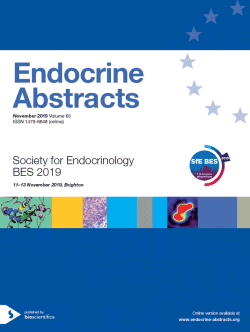Searchable abstracts of presentations at key conferences in endocrinology

Society for Endocrinology BES 2019
Brighton,
United Kingdom
11 Nov 2019 - 13 Nov 2019

Come and exchange knowledge, share experiences and strengthen collaborations across our global community of endocrinologists!
SENIOR ENDOCRINOLOGISTS’ SESSION
Innovations in teaching
ea0065se1.1 | Innovations in teaching | SFEBES2019
What happened to the adrenal X-zone?
After its first description in 1924, and naming by Evelyn Howard in 1939 to reflect its transient and unknown function, the X-zone of the mouse adrenal attracted a great deal of attention from endocrinologists. What factors were responsible for its appearance at the age of 812 days, growth, and then disappearance with puberty in the male and first pregnancy in the female? A great deal was discovered, even given the limited techniques available, about which hormones contr...
ea0065se1.2 | Innovations in teaching | SFEBES2019
Is the estrogenic component of Premarin all bad?
The Womens Health Initiative studies reported that the menopausal hormone therapy (MHT) regimen containing conjugated equine estrogen (CEE) and medroxyprogesterone acetate increased, whereas CEE alone reduced breast cancer incidence. These observations suggest the possibility that CEE might exert unique actions on breast and also suggest the need to eliminate the progestogen from MHT regimens. A MHT regimen called a tissue selective estrogen complex (TSEC), containing CE...
ea0065se1.3 | Innovations in teaching | SFEBES2019
Potential benefits of adequate vitamin D status for non-bony disorders are large, so why do so many RCTs of supplementation fail?
Cross-sectional and prospective data reveals significant dose-wise health-risk reductions with higher vitamin D status, each with proven mechanistic explanations. RCT causality confirmation is sparse but support is emerging with better appreciation of vitamin Ds biology. Confounding factors in vitamin D RCT design include that nutrients are not pharmaceuticals [increases in serum 25(OH)D concentrations and efficacy with supplementation of deficiency are S-sha...



